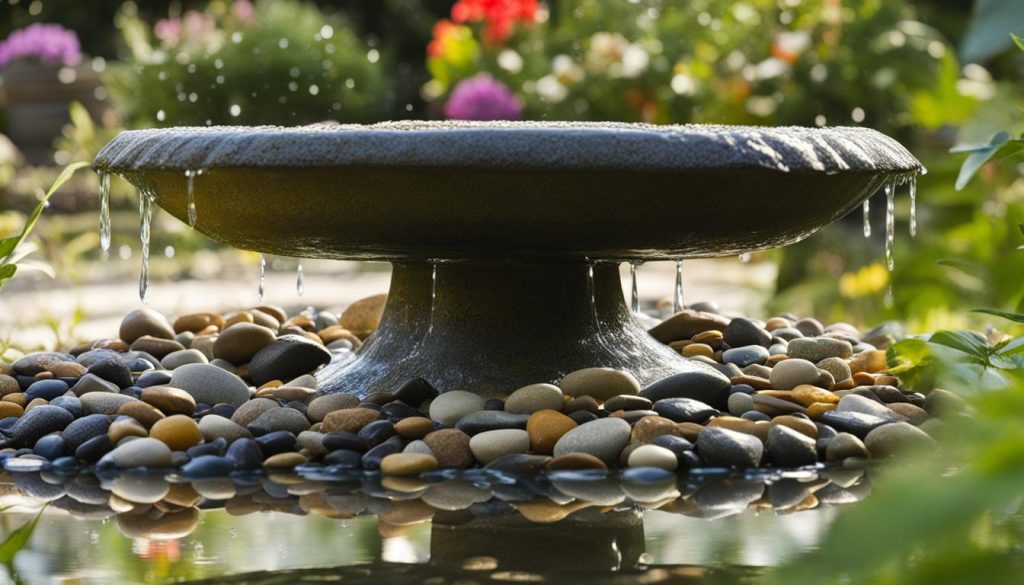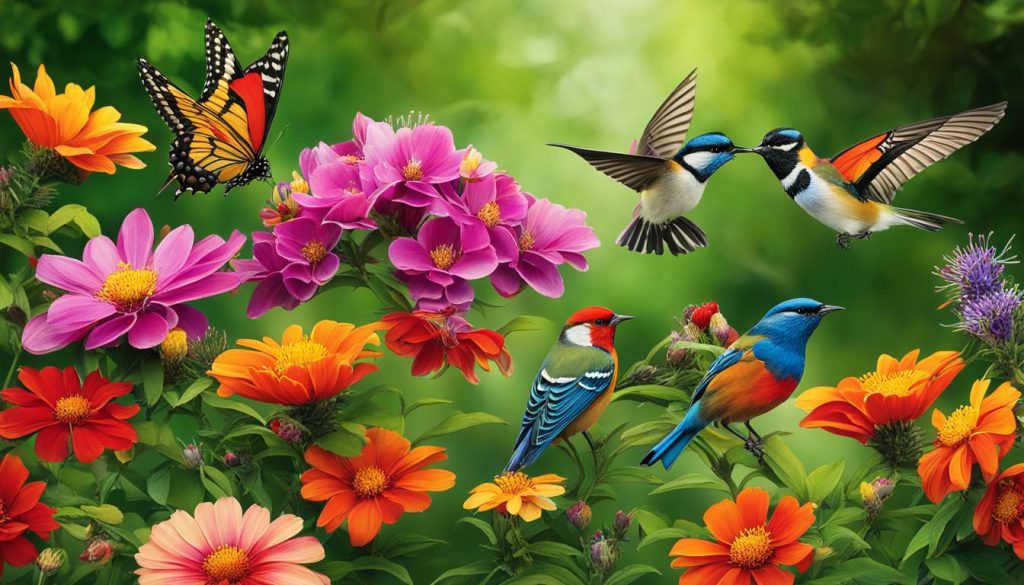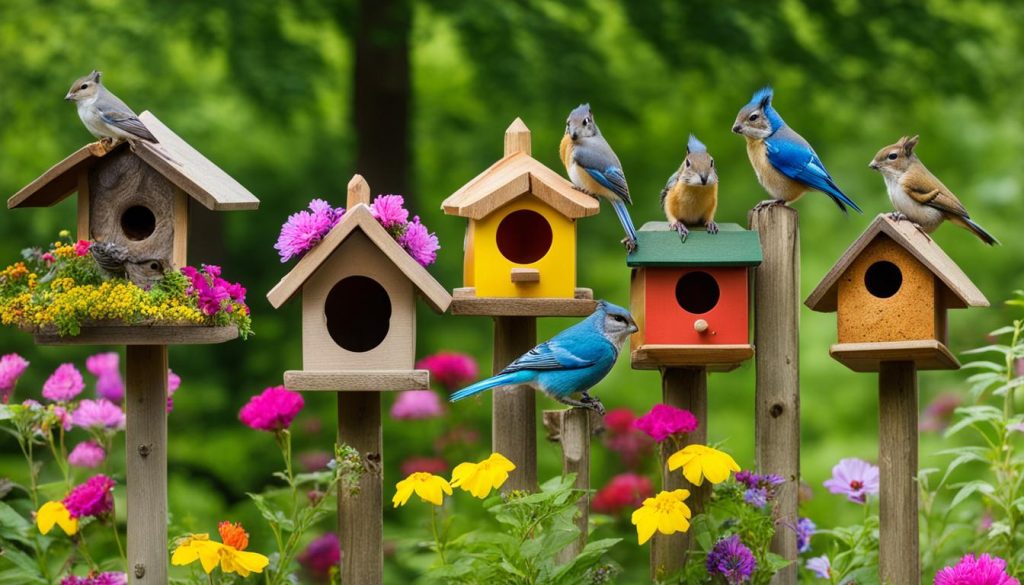
How to Build a Bird Feeding Station to Attract Wildlife
To create a bird feeding station that attracts a variety of wildlife to your garden, follow these steps. This comprehensive guide will help you set up a feeding station that will attract a range of bird species. Whether you have a large backyard or a small garden, these tips will work for you. Remember, the focus of this article is on British bird species, but the methods described can be applied worldwide.
Choosing Bird Feeders and Supplies
When it comes to attracting a variety of bird species to your garden, selecting the right bird feeders and supplies is essential. With a wide range of options available, it’s important to choose feeders that cater to the specific needs of different bird species. The right selection will not only ensure that you attract a diverse array of birds but also provide them with a comfortable and safe feeding environment.
One popular type of bird feeder is the short cylinder feeder. These feeders have multiple feeding holes and can accommodate several birds at once. They are a great choice if you want to attract smaller bird species such as finches and sparrows. For a more deluxe option, consider feeders with attached trays. These trays catch debris, keeping your garden clean and tidy.
When it comes to bird feed, sunflower hearts are a favorite among many species. They are high in energy and attract a wide range of birds, including tits, finches, and woodpeckers. If you want to specifically attract goldfinches, consider using niger seed. Dried mealworms are a great choice for robins, while peanuts are loved by long-tailed tits. Providing a variety of food options will attract different bird species to your garden.
| Feeder Type | Species Attracted |
|---|---|
| Short Cylinder Feeder | Finches, sparrows |
| Deluxe Feeder with Tray | All bird species |
| Sunflower Hearts | Tits, finches, woodpeckers |
| Niger Seed | Goldfinches |
| Dried Mealworms | Robins |
| Peanuts | Long-tailed tits |
Remember to provide multiple feeders to avoid crowding and fighting among the birds. This will give each bird a chance to feed peacefully and reduce the risk of aggression or dominance. By choosing the right bird feeders and supplies, you can create an inviting feeding station that will attract a diverse range of bird species to your garden.
Next, let’s explore the feeding patterns and techniques that will help you make the most of your bird feeding station.
Feeding Patterns and Techniques
Understanding Birds’ Feeding Habits
When it comes to feeding birds, understanding their natural habits and patterns is key. Birds typically rely on a combination of foraging and feeding from bird feeders to meet their dietary needs. By providing supplementary food, we can ensure that they have access to a variety of nutrients, especially during challenging seasons.
It’s important to note that birds should not rely solely on bird feeders for their nutrition. By offering food every few days rather than daily, we encourage them to continue foraging for natural food sources. This also helps with their development and teaches their young how to find food independently.
It’s best to avoid sudden changes in feeding patterns, as this can disrupt the birds’ routine and cause stress. Birds become accustomed to a particular feeding schedule, so consistency is key to their well-being. Gradual adjustments, such as gradually reducing food offerings as natural food sources become more abundant, can be beneficial.
Strategic Placement for Optimal Bird Feeding
Creating a welcoming environment for birds involves more than just providing food. Strategic placement of the bird feeding station can greatly enhance the experience for both the birds and the birdwatchers. Consider positioning the feeding station near natural hiding places, such as shrubs or trees, where birds can take shelter or perch. This not only provides them with a sense of security but also creates opportunities for stunning birdwatching moments.
Another crucial aspect of positioning is ensuring optimal lighting conditions. Birds are more likely to visit a feeding station that is well-lit, especially during early morning and late afternoon when the sunlight is soft and flattering. Additionally, a clean and uncluttered background can make bird watching and photography more enjoyable.
Creating Photogenic Locations
Enhance your bird feeding station by strategically placing perches and props that create photogenic locations. By adding natural perches, such as branches or fallen logs, you can create picturesque scenes where birds can rest and interact. This not only adds beauty to your bird feeding area but also provides opportunities for captivating photographs.
Consider the composition of your photographs and the angles from which you want to capture the birds. Experiment with different placements of perches and props to achieve unique perspectives and captivating shots. Remember to respect the birds’ space and observe them from a distance to avoid causing any stress or disturbance.
| Tip | Example |
|---|---|
| Place a small birdbath near the feeding station |  |
| Add colorful flowers around the feeding area |  |
| Hang bird-friendly decorations in nearby trees |  |
By implementing these feeding patterns and techniques, you can create an inviting space for birds to feed and thrive in your garden. Remember to observe and enjoy these beautiful creatures from a respectful distance, providing them with the nourishment they need while allowing them to maintain their natural foraging behaviors.
Creating a Bird Hide
To get closer to the birds and capture better photographs, consider investing in a bird hide. A bird hide allows you to conceal yourself and avoid sudden movements that may scare the birds away. With a well-positioned bird hide, you can observe the birds up close without causing any disturbance.
There are various options available when it comes to bird hides. You can find basic shooting hides that provide a simple and affordable solution. These are portable and easy to set up, making them ideal for photographers on the go. For those who are more serious about bird photography, there are high-quality hides designed specifically with photographers in mind. These hides often feature multiple viewing windows, adjustable heights, and camouflage patterns to blend seamlessly with the surroundings.
Investing in a bird hide can greatly enhance your bird watching and photography experience. It allows you to observe birds in their natural habitat without causing any disturbance. Whether you’re a beginner or an experienced bird photographer, a bird hide is a valuable tool that can help you capture amazing shots.
When choosing a location for your bird hide, consider both lighting conditions and the background. You want to position the hide in a spot where the birds are likely to come close, but also where you can get good lighting for your photographs. Take into account the direction of the sun and any potential obstacles that may cast unwanted shadows.
A bird hide can be a valuable addition to your bird feeding station setup. It allows you to observe birds up close and capture stunning photographs without disturbing them. Whether you opt for a basic hide or a more specialized one, make sure to position it strategically for optimal bird viewing and photography.
Strategic Positioning for Optimal Bird Viewing
When it comes to attracting birds to your garden, strategic positioning of your bird feeding station is key. By carefully choosing the location, you can create an environment that is welcoming and safe for birds to visit regularly. Here are some tips to help you optimize the positioning of your bird feeding station for optimal bird viewing:
Create a Natural Habitat
Consider the natural hiding places in your garden, such as shrubs, trees, or fences, that can provide shelter and perching spots for birds. These areas can serve as ideal vantage points for birds to observe the feeding station before approaching. By incorporating these features into your garden, you can create a more inviting and attractive environment for birds.
Avoid Disturbance
Avoid placing the bird feeding station too close to your house or areas where there is frequent human activity. Birds are easily startled by sudden movements and loud noises, so it’s important to provide them with a quiet and undisturbed space to feed. This will not only help attract birds but also reduce the risk of window collisions, which can be harmful to the birds.
Consider Lighting and Background
Position the feeding station in an area that receives ample sunlight throughout the day. Birds are attracted to well-lit spaces, so ensuring that the feeding station is properly illuminated can increase the chances of attracting a greater variety of bird species. Additionally, choose a location with a clean and uncluttered background to enhance the visibility of the birds and create better opportunities for photography.
| Positioning Tips | Benefits |
|---|---|
| Create a natural habitat with hiding places | Attracts birds looking for shelter and perching spots |
| Place the feeding station away from the house | Reduces disturbance from people and potential window collisions |
| Position the feeding station in a well-lit area | Attracts birds with ample sunlight and enhances visibility |
| Choose a location with a clean background | Provides better opportunities for bird photography |
By following these strategic positioning tips, you can create an enticing and bird-friendly space in your garden. Remember to be patient and allow the birds time to discover and become comfortable with the feeding station. With the right positioning and a little bit of time, you’ll soon be enjoying the beautiful sight of a variety of bird species right in your own backyard.
DIY Bird Feeding Stations on a Budget
Creating a bird feeding station doesn’t have to break the bank. With a little creativity and resourcefulness, you can build your own DIY bird feeders and attract a wide variety of beautiful birds to your garden. Not only is it a cost-effective way to enjoy bird watching, but it also gives you the satisfaction of creating something unique and environmentally friendly.
One simple option is to repurpose household items and recycled materials. For example, you can make a bird table using a solid timber plank or even an old wooden table. Place it in a quiet corner of your garden, away from any strong wind, and fill it with bird feed. This provides a safe and elevated platform where birds can easily access the food.
Another budget-friendly idea is to make DIY bird feeders from everyday objects. Plastic bottles can be transformed into hanging feeders by cutting holes near the base and attaching string or wire for hanging. Wooden spoons can be used as perches, and teacups can serve as charming feeding stations. Toilet roll tubes can be filled with bird feed and hung from tree branches using twine or string, providing a feeding option for smaller bird species.
By getting creative with your DIY bird feeding stations, you can attract a diverse range of feathered visitors to your garden without spending a fortune. It’s a fun and rewarding project that allows you to connect with nature and enjoy the beauty of birds right at your doorstep.
DIY Bird Feeding Stations: Materials and Instructions
| Materials | Instructions |
|---|---|
| Plastic bottles |
|
| Wooden spoons |
|
| Teacups |
|
| Toilet roll tubes |
|
Conclusion
I hope this article has provided you with valuable information on how to build a bird feeding station that will attract a variety of wildlife to your garden. By following these steps and implementing these tips, you can create a welcoming environment for birds and enjoy the beauty of their presence right in your own backyard.
Remember, when choosing bird feeders and supplies, consider the variety of bird species you want to attract. Provide a diverse range of feeders and offer supplementary food that complements their natural diet. Also, strategically position your feeding station near natural hiding places and ensure the right amount of sunlight reaches it throughout the day.
If you’re interested in getting closer to the birds and capturing stunning photographs, consider investing in a bird hide. This will allow you to observe them without scaring them away and create ideal conditions for photography.
Lastly, building a bird feeding station doesn’t have to break the bank. You can explore DIY options using household items to create budget-friendly bird feeders and tables. Not only will this save you money, but it’s also an environmentally friendly choice.
So, go ahead and create your own bird feeding station. With a little planning and effort, you can attract a variety of bird species to your garden, providing them with a safe and reliable food source while enjoying their presence.